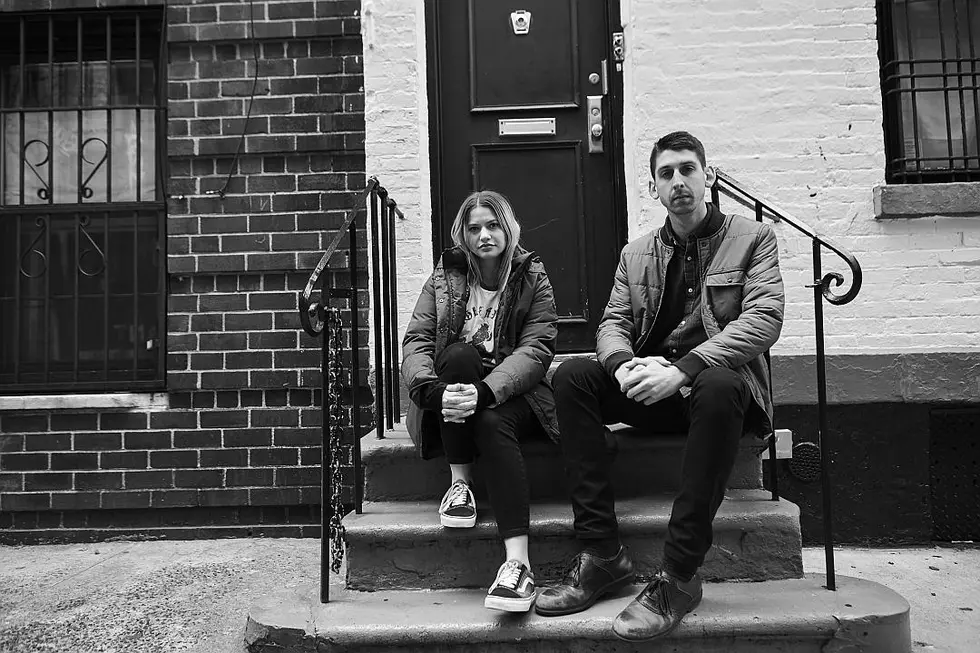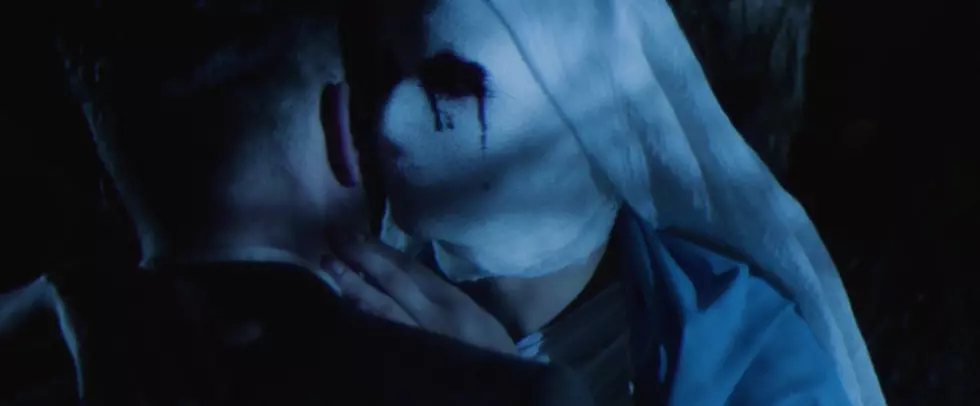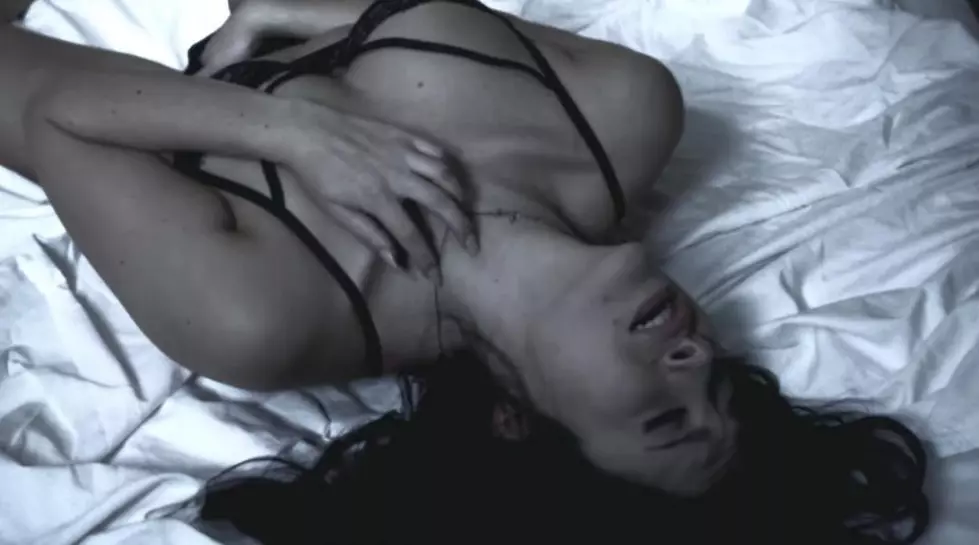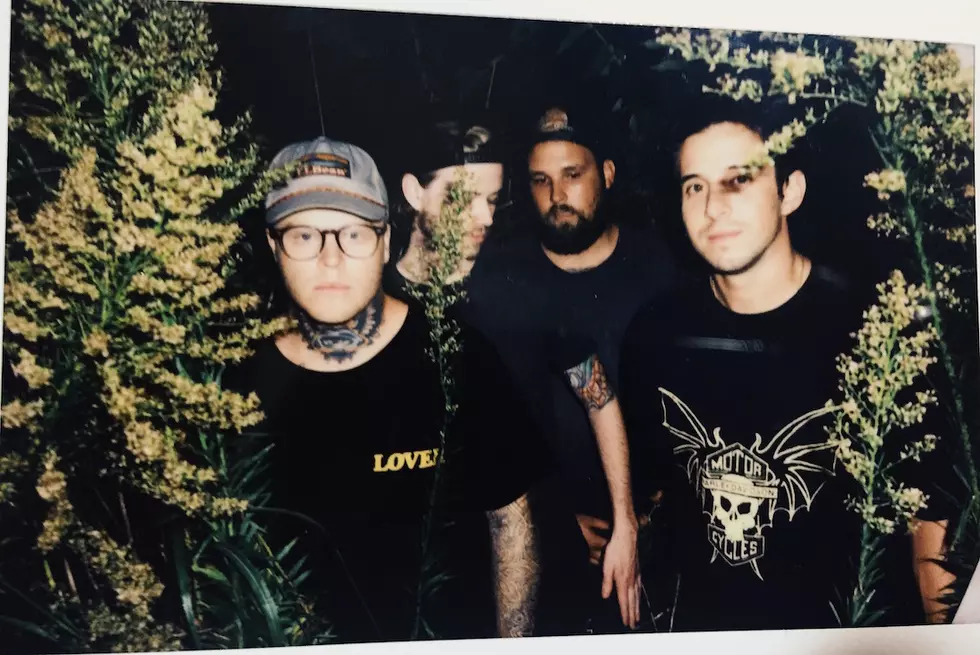
Did the New York Times Magazine ‘Steel’ From Carcass?
On February 19, the New York Times Magazine ran a cover that had a lot of fans of Carcass scratching their heads. The art in question was for a story on Obamacare, and featured a set of stainless steel tools laid out in a circle with text in the center, which bore a striking resemblance to recurring art from the legendary death metal band. First appearing on the inside of 1991's Necroticism – Descanting the Insalubrious, and again on 1992's Tools of the Trade EP and AGAIN on the 2013 comeback LP, Surgical Steel, the array of tools has become as ubiquitous as the band's logo itself.
The cover of the NYT Mag left a lot of questions unanswered, so we reached out to the photographer and stylist behind the shoot separately to determine its origin. Was it a coincidence? Tribute? Or something far more sinister? As of press time, several calls and emails have been left unanswered, so we went to Jeff Walker of Carcass to ask him what he thought of the situation. His comments — as well as some juicy details on what Carcass have in store for 2017 — are below alongside some exclusive photos of the making of the Surgical Steel art.
Let's talk about how the art for the inside of Necroticism originally came about.
Our manager came up with the original design, and it was the actual CD print, which is why they were arranged in a circular fashion. I really liked it, because I like bands that have symbols that carry through their career, through their older albums. Like Crass, maybe, or Queensrÿche have their symbol. So, I like the idea of continuing to use it. When we did Surgical Steel, because it’s a comeback album, it was a way of kind of consolidating the fact [that] we were back by using this familiar symbol. I mean, I can’t believe we didn’t do it back in the day — it seems so obvious to do, to use surgical implements and make the symbol real, as opposed to just a graphic. I mean, we’re a heavy metal band, it’s a metal album, so it makes sense to buy sheets of stainless steel, buy surgical tools and arrange [them] in such a fashion; and yeah, it was such a simple, elegant concept for an album sleeve. And the reaction? Some people think it’s good, some people think we’re being lazy by rehashing what we’ve done in the past, because we had an EP called Tools of The Trade. It had the graphic on it, the tools graphic. So, there’s some people that think we’re lazy, rehashing what we’ve done before.
So, when you saw this New York Times cover, what was the first thing you thought?
Well, to be honest, I had just saw a post on Facebook. Leon del Muerte, who plays in Nails and Nausea from Los Angeles, he posted it on Facebook. To be honest, all I saw was the pic of the graphic. Later in the day, [a friend] sent me a photograph of the whole magazine. I thought it was just a small piece with, like, a banner; I didn’t realize it was a page in a magazine. So, I was like, yeah, you know, it’s just a coincidence. But when I saw the whole magazine cover, yeah, [laughs] it does look a bit like the Carcass album. Ironically, Metal Hammer in Germany, when the record came out, our label bought a full wraparound advert, which looks exactly the same as the New York Times piece, so it’s kind of funny.
Do you feel like this is coincidence? Tribute? Or something more sinister?
I think it’s accidental. I think it’s a fluke. I’d like to think that deep down, someone at the New York Times in the graphic department is listening to Carcass. That they are being subversive and paying homage to us. Maybe it’s just [that] some graphic designer walked into a record store and saw it. Or maybe they saw it once a few years ago and it stuck in their head and they don’t realize that happened? Because that’s what happens to a lot of art as well — you can see things and don’t remember you’ve seen them.
It seems so obvious in some respects to arrange tools like that. I mean, I’d like to think it’s a complete rip-off of the Carcass thing. [Laughs]
I’m making a bit of an assumption, and as of press time I haven’t been able to confirm this, but it seems to me that the photographer and stylist for the shoot do not seem to be the types to be fans of Carcass.
Maybe that is signs of plagiarism then. [Laughs] Maybe they’re worried we might sue or something. Whether it’s an accident or a thing of influence, shall we say, as opposed to plagiarism, I remember when Surgical Steel came out, people were saying we copied other bands. Which is kind of insane, because they’re talking about albums that had come out in between us using the symbol in the '90s. So, we were getting accused of copying bands from five, six, seven years ago. Bands we’d never even heard of that had a similar motif to the Carcass tools. Now again, I don’t know if they were copying or it was just coincidence, but it’s absurd we’d be accused of copying another band when, in fact, we were plagiarizing ourselves.
Exactly. Let’s be fair — your music is rooted in something as well. Everyone “rips off” someone in some respect. You have to make it your own.
Yeah. But if you’re influenced versus if you copy something wholesale, that’s completely different. But there’s a lot of artwork out there. Discharge, for example, used a lot of John Heartfield. There’s a lot of artwork out there that you think is original, but it turns out it’s not.
The mark of good art sticks with you even when you’re not thinking about it. Which may be the case here. On this same level, how do you feel about the proliferation of metal and punk art and aesthetics in mainstream culture?
A lot of it has to do with people at art college and fashion school that come from a certain generation who were wearing their influences on their sleeve. But I also think there’s a hell of a lot of lazy bastards out there, and in order to get some ideas, they are flicking through metal magazines or plagiarizing heavy metal things, because it’s not been done in mainstream fashion. Same with the punk influences as well — it’s just recycling stuff.
What about people who come from that culture? You could debate that they are trying to push the music to the masses.
But that goes back to Heartfield and Discharge before; a lot of the Crass artwork isn’t really original in itself. It’s a product of what they were taught in art school. I can see that because our manager, Martin [Nesbitt], who originally designed the circle of tools that we are discussing, he has books on the subject of punk art and some of the original influences, like Heartfield. So, in a lot of ways, they weren’t original, really. So, if you are copying that and selling it as high art or high fashion, it’s pretty sad and lazy. It’s not art or design; it’s repackaging. And that’s a bad art.
But if you're repackaging an art that is seldom seen by people, and doing it for a wider audience, is that art to you?
It’s ripping it off. It’s exploiting for commercial gain.
You guys just did a bunch of U.S. dates late last year. Do you have any other live dates coming? Any new material on the way?
Last year we meant to take it easy and write the new album, but the Slayer tour popped up. Because we had work visas and a new backline in the States, we decided to take it to get our money’s worth out of the situation. So, that and some festival dates put the new album on the back burner, so we’re trying to concentrate on that this year. But again, we have a bunch of festivals coming up in the summer. We’re playing Psycho Las Vegas but we’re not touring the States again. We’re trying to concentrate on the new album. As of yet, we haven’t had a proper jam, though Bill [Steer] and Dan [Wilding] may have gotten together to work on stuff. We definitely plan on doing another album, and we won’t rush it out. Life keeps getting in the way.
More From CLRVYNT









